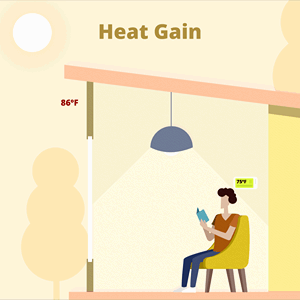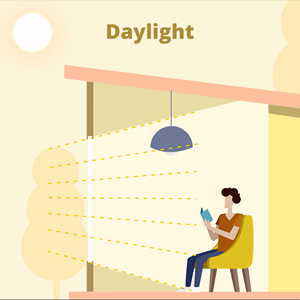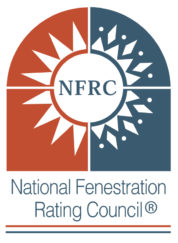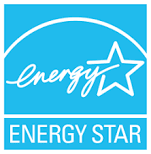
Window Ratings
Introduction to Window Ratings
Window ratings measure how well windows perform in terms of energy efficiency and other factors. The National Fenestration Rating Council (NFRC) is the leading organization that develops and certifies window ratings in the United States.
Window ratings are important because they can help consumers choose the right windows for their home and climate. Energy-efficient windows can help homeowners save money on their energy bills, reduce their carbon footprint, and improve the comfort of their homes.
Every NFRC-certified window has a label that displays its window ratings, manufacturer information, model number, and size. These ratings are the most reliable and are used by the U.S. Environmental Protection Agency’s ENERGY STAR® program to evaluate windows. The ratings are essential for consumers as they help them compare products and make informed purchases. Every NFRC-rated window comes with a label that shows its ratings. Moreover, ENERGY STAR-certified products, when used to replace old windows, can reduce a home’s utility bills by an average of 13%.
Why are window ratings important?
Window ratings are important because they can help consumers:
- Choose the right windows for their home and climate.
- Save money on their energy bills.
- Reduce their carbon footprint.
- Improve the comfort of their home.
Independent Energy Window Ratings
There are three mandatory window efficiency ratings NFRC evaluates for all windows, including terms you may have heard, such as u-factor ratings and solar heat gain coefficient. Lower or higher ratings for each of these areas aren’t always better or worse for your home — that depends on where you live and how much sunlight hits your windows. The Efficient Windows Collaborative’s Window Selection Tool searches replacement window ratings to find the best options for your home. The tool considers each of these three factors, as well as your location and the direction your windows face. You can view window ratings by brand using the tool and continue reading this page for window ratings explained. NFRC’s ratings system also includes two optional ratings that measure efficiency in areas other than energy use.
Click here to learn more about ENERGY STAR and its Most Efficient Program, which recognizes products that use cutting-edge technologies to deliver the most outstanding efficiency.
By understanding window ratings, consumers can decide which windows to purchase for their homes.

Energy Performance Ratings
U-FACTOR: This mandatory rating measures the amount of heat inside your home that can escape through a window and is the top-left number on all NFRC labels.
- Rating range: 0.10 – 2.00 (this may vary, but is a typical range)
- A lower number means less heat loss
- BUYERS TIP: In cold climates, windows with low U-factors help reduce heating costs
U-factor should not be confused with R-value, which is another common measurement of a home’s energy efficiency. R-value measures the effectiveness of insulation in other parts of a building’s exterior shell – its walls, roof, floors, and anything else that acts as a barrier between outside and inside. This is often called a home’s envelope. Unlike U-factor, for which a lower number is better, a higher R-value indicates better performance for the various elements that insulate a home. The benefits of efficient windows with a low U-factor include lower monthly utility bills, savings on heating-and-cooling equipment, and control comfort.

SOLAR HEAT GAIN COEFFICIENT (SHGC): This mandatory rating measures the amount of solar heat sun that can enter a home through a window and is the top-right number on all NFRC labels.
- Rating range: 0.00 – 1.00
- A lower number means less heat gain
- BUYERS TIP: In hot climates, windows with a low rating can reduce cooling costs
The right ratings for your home depend on your climate and the orientation of each window. A lower rating promotes energy efficiency in hot climates and prevents overheated rooms from the afternoon sun. The benefits of windows with low-SHGC ratings include lower monthly utility bills, savings on heating-and-cooling equipment, and control comfort.

VISIBLE TRANSMITTANCE (VT): This mandatory rating measures the amount of solar light that can enter a home through a window. The rating can be found on the middle or bottom row of an NFRC label on the left side.
- Rating range: 0.00 – 1.00
- A higher number means more natural light
- BUYERS TIP: Windows with a high rating may reduce your dependence on artificial lighting and lower monthly utility bills
Efficient windows can allow natural light into a home while also keeping out unwanted heat. Getting the sun’s benefits without accepting its drawbacks is possible thanks to reflective coatings on the glass surface. Different coatings and treatments exist, such as low-e (emissivity) coatings, tints, and films. Depending on your needs, these allow different amounts of light and heat to pass through your windows. The benefits of high-visible transmittance efficient windows include enhanced natural light, lower monthly utility bills, and additional protection from faded furniture, art, or wood floors.

AIR LEAKAGE: This optional rating measures the volume of air that can infiltrate a home through a window. This rating can be found on the middle or bottom row of an NFRC label on the right side.
- Rating range: less than or greater than 0.3
- A lower number means less air leakage
- BUYERS TIP: windows rated higher than 0.3 in this specific category disqualify a building from ENERGY STAR certification
The benefits of low air leakage include lower monthly utility bills, fewer cold air drafts, control comfort, and reduced street noise and other external sounds.

CONDENSATION RESISTANCE: This optional rating measures a window’s ability to prevent moisture on the interior of a window. This rating can be found on the bottom row of the NFRC label on the left side.
- Rating range: 1 – 100
- A higher rating means less condensation on and around a window
- BUYERS TIP: a higher rating is better but particularly important in cold climates
Condensation on the outside of a window is less of a concern than condensation on its inside surface. These droplets of moisture form when the inside surface temperature is colder than the dew–point temperature in the room – the point at which air is too humid to hold more moisture and becomes a liquid. The benefits of efficient windows with higher ratings for condensation resistance include protection against cold drafts, mold, and mildew; and control comfort.

National Fenestration Rating Council
The National Fenestration Rating Council (NFRC) has developed a window energy rating system based on whole product performance. This section on the National Fenestration Rating Council describes what the NFRC is, what they rate and certify, and what is displayed on the NFRC label.

ENERGY STAR
The Department of Energy (DOE) and the Environmental Protection Agency (EPA) have developed an ENERGY STAR designation for products meeting certain energy performance criteria. This section on ENERGY STAR shows the ENERGY STAR performance zones and requirements.

Lawrence Berkeley National Lab (LBNL)
Lawrence Berkeley National Lab (LBNL) is a federal government lab that supports the mission of the Department of Energy to increase the energy efficiency of windows and buildings. LBNL uses advanced technology development, algorithms, and software tools, supported by extensive testing facilities and experienced scientists.